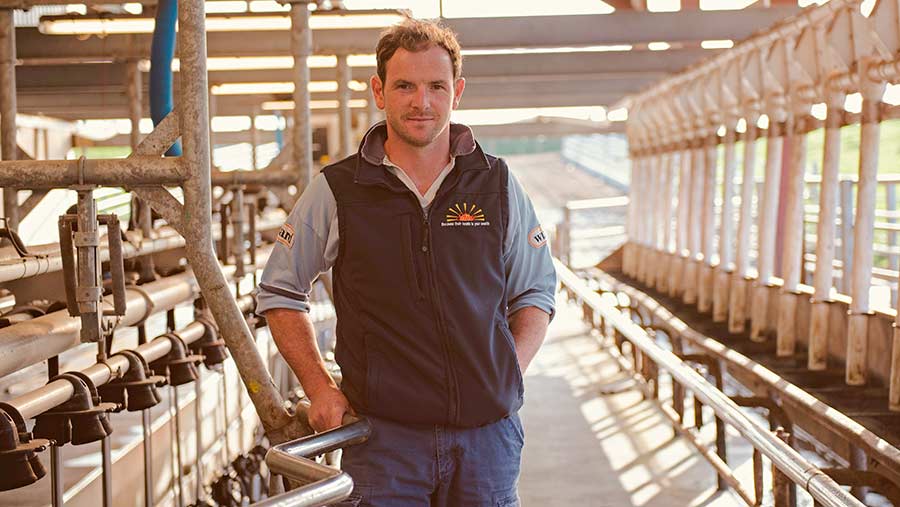Farmer Focus: Fertiliser delivery may get some strange looks
 © Lindsay Walker
© Lindsay Walker Calving has started with about 15% of the herd calved and we’re only four days past our planned start of calving.
The team was genuinely questioning the gestation length of the AI bulls chosen last year.
It’s a great start and while we have had a cold wind, the weather is allowing the farm to dry up and grazing conditions for the cows are good.
Last week took some adjusting to get the daily routines sorted now we have cows to milk, calving checks to do and calves on the ground to feed.
Tomorrow, we have our annual TB test. I don’t think there is ever a good time in the year for it, but we will take it as an opportunity to draft out any close calvers and walk the heifers through the parlour to let them get used to it.
See also: 5 early spring tips to boost grass production
Science backing our fertiliser plans
This week will also see our first application of fertiliser for the year with approximately 40 units of N and 80 units of P going down in a liquid application.
The use of liquid fertiliser is convenient for us in the spring with the contractor able to cover the whole farm in two days.
I know the arrival of fertiliser will get some funny looks this week, however, in previous years we quickly saw the response to it and, by taking advantage of good ground conditions now, we are ensuring we make the nitrogen available to the grass.
We are backed up by some science. Moorepark research from Ireland shows the first application of fertiliser in the last week of January or first week in February gives the best response in spring grass growth.
Having walked most of the farm last week, I don’t think we have had a huge amount of winter grass growth and certainly nothing like the previous winter, so a response to the fertiliser will be welcomed.
With the excitement of calving and a new Six Nations Championship upon us, I wish everyone good fortune with their spring workloads and I look forward updating you in March.
Johnjo Roberts converted his family’s 250ha beef and sheep farm on Anglesey to an 800-head spring-block calving dairy in 2014. Maximising grazed grass and good milk solids are priorities.
